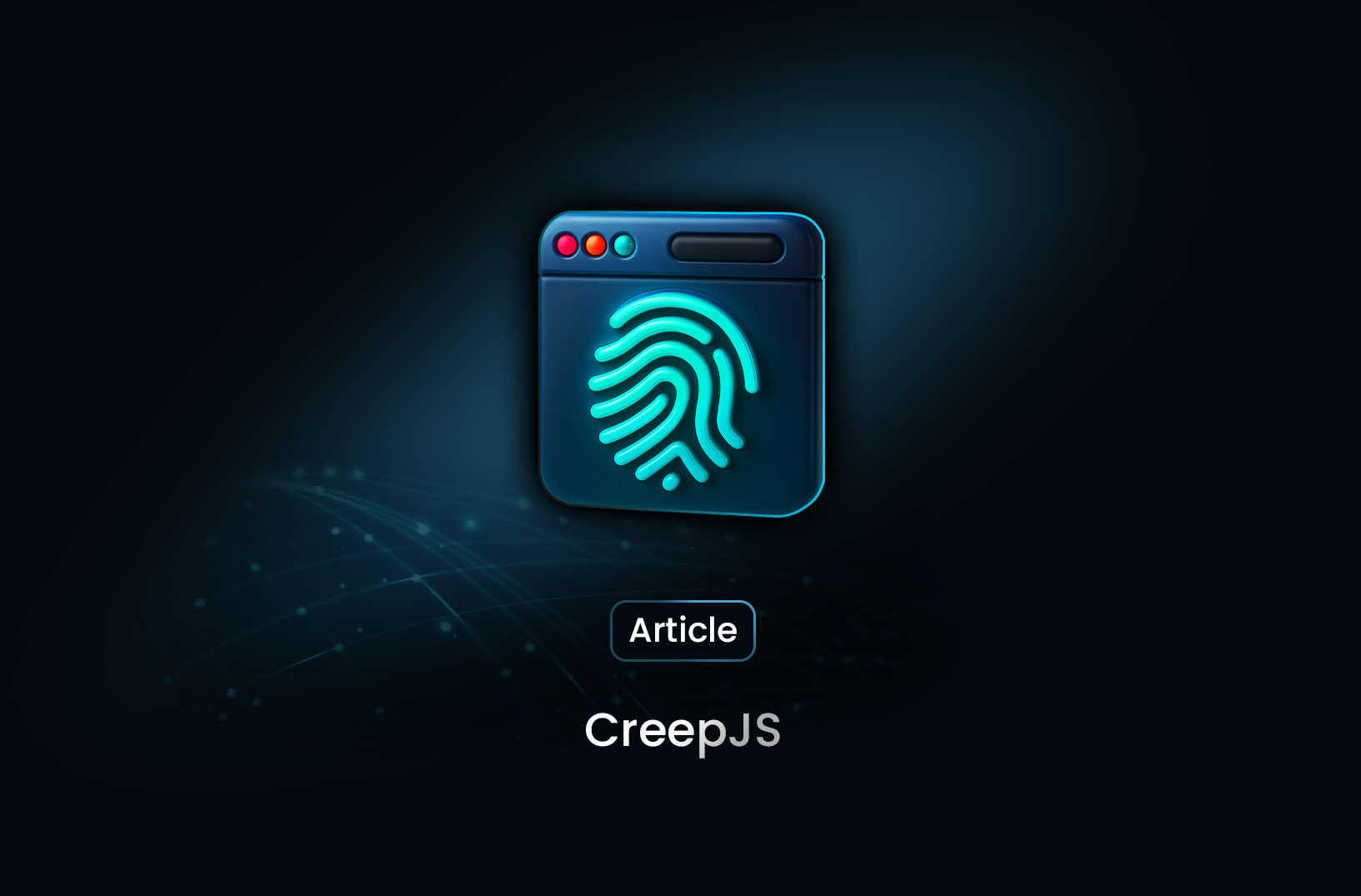
CreepJS: Unveiling Browser Fingerprinting Vulnerabilities
GuideCreepJS is an open-source JavaScript-based project developed to detect and analyze vulnerabilities in modern anti-fingerprinting tools and browsers.
CreepJS is a powerful tool that reveals just how easy it is to identify and track web browsers—despite using anti-fingerprinting tools. While most people rely on cookies for tracking, modern websites have moved on to more advanced methods like browser fingerprinting. CreepJS highlights the hidden ways your browser gives itself away, making it a go-to resource for developers, privacy advocates, and web scraping professionals.
What Is CreepJS?
CreepJS is an open-source JavaScript-based project developed to detect and analyze vulnerabilities in modern anti-fingerprinting tools and browsers. By collecting extensive data from web browsers, it generates unique fingerprints, revealing how browsers can be identified and tracked despite privacy measures.
Originally created to highlight weaknesses in anti-fingerprinting extensions and browsers, CreepJS has become a valuable diagnostic tool for understanding and mitigating browser fingerprinting techniques.
How Does CreepJS Work?
CreepJS operates by probing various browser attributes and behaviors using JavaScript. It collects data points such as:
-
JavaScript Tampering Detection: Identifies inconsistencies in browser object prototypes altered to impersonate browser fingerprints.
-
Fingerprint Profiling: Generates detailed fingerprint profiles by capturing unique browser behaviors, including device properties and rendering capabilities.
-
Browser Privacy Settings Analysis: Inspects privacy-related browser settings to identify inconsistencies and potential privacy leaks.
By combining these data points, CreepJS creates a comprehensive fingerprint that can uniquely identify a browser instance, even in the presence of anti-fingerprinting measures.
Why Is CreepJS Important?
For developers and researchers, CreepJS serves as a critical tool for:
-
Testing Browser Automation Tools: Evaluating how tools like Puppeteer, Selenium, and Playwright fare against fingerprinting detection.
-
Enhancing Privacy Measures: Identifying and addressing potential leaks in anti-fingerprinting solutions.
-
Understanding Tracking Mechanisms: Gaining insights into how browsers can be uniquely identified and tracked online.
By using CreepJS, developers can better understand the effectiveness of their privacy tools and make informed decisions to enhance user privacy.
How to Use CreepJS
To utilize CreepJS, visit the CreepJS demo page. The tool will automatically analyze your browser and display the collected fingerprinting data. This information can help you assess the uniqueness of your browser's fingerprint and identify potential privacy concerns.
Conclusion
CreepJS offers a powerful means to understand and analyze browser fingerprinting techniques. By exposing the intricacies of how browsers can be uniquely identified, it empowers developers and privacy advocates to enhance their tools and strategies against tracking. In an era where digital privacy is paramount, tools like CreepJS are indispensable for staying ahead in the ongoing battle against online tracking.
Find more insights here

Search Engine Marketing Intelligence: What It Is and How Businesses Use Data to Win
Discover what search engine marketing intelligence is, why it’s essential for competitive digital ad...

B2B Data Provider: How Businesses Collect Large-Scale Data with MrScraper
Learn what a B2B data provider is, why businesses need large-scale data, and how MrScraper helps com...

Minimum Advertised Price Monitoring with Mrscraper
Learn how to automate Minimum Advertised Price (MAP) monitoring using Mrscraper. Detect pricing viol...
